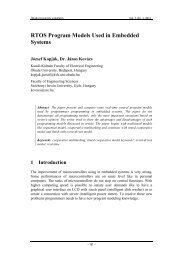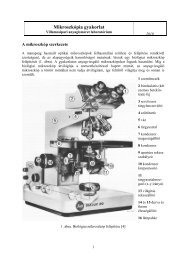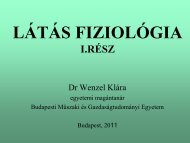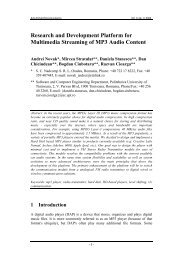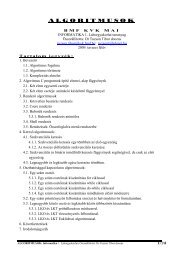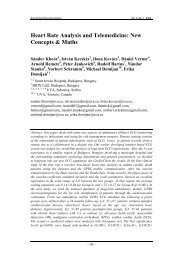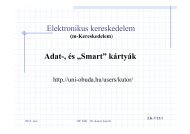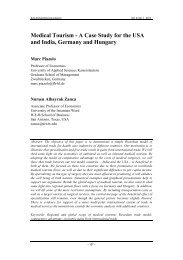You also want an ePaper? Increase the reach of your titles
YUMPU automatically turns print PDFs into web optimized ePapers that Google loves.
Francis Edel<strong>in</strong>e <strong>The</strong> use <strong>of</strong> colour <strong>in</strong> visual poetry<br />
2.10 Augusto de Campos<br />
<strong>The</strong> Brazilian poet Augusto de CAMPOS, together with his brother Haroldo, and<br />
<strong>in</strong> conjunction with the Swiss poet Eugen GOMRINGER, created <strong>in</strong> 1955 the<br />
movement <strong>of</strong> Concrete <strong>Poetry</strong>, soon to become an active <strong>in</strong>ternational community<br />
<strong>of</strong> poets. Augusto de CAMPOS is famous for his <strong>in</strong>ventiveness, and s<strong>in</strong>ce the<br />
beg<strong>in</strong>n<strong>in</strong>gs he never ceased to explore new techniques: light bulbs, pop-up poems,<br />
video-poems, holograms etc.<br />
A great many <strong>of</strong> his creations rely on colour.<br />
Sem saida (Without exit) has to be sequentially projected on a screen: what I am<br />
show<strong>in</strong>g here is the f<strong>in</strong>al result (Fig.15). First appears for <strong>in</strong>stance a yellow<br />
sentence, written along an undulat<strong>in</strong>g l<strong>in</strong>e. <strong>The</strong>n comes a second phrase, <strong>in</strong><br />
another colour, also zig-zagg<strong>in</strong>g on the screen, and cross<strong>in</strong>g the first. A total <strong>of</strong> 7<br />
sentences appear successively, f<strong>in</strong>ally cover<strong>in</strong>g the screen and compos<strong>in</strong>g a full<br />
square and a complete poem. Each l<strong>in</strong>e is constra<strong>in</strong>ed <strong>in</strong> the square, a space from<br />
which the poet cannot escape, as the text repeats. <strong>The</strong> text also has a double<br />
mean<strong>in</strong>g, and is rem<strong>in</strong>iscent <strong>of</strong> the dictatorship period that the Brazilians had to<br />
suffer <strong>in</strong> 1964. In the f<strong>in</strong>al result, only colour allows to discover and to read the<br />
<strong>in</strong>dividual sentences.<br />
Fig.15 Fig.16<br />
Lygia f<strong>in</strong>gers proposes a more complex process (Fig.16). Besides be<strong>in</strong>g a poet, Augusto de<br />
CAMPOS is also a musical critic who was much admir<strong>in</strong>g Anton von WEBERN. In 1909,<br />
Schoenberg conceived the Klangfarbemelodie (Tone-<strong>Colour</strong> Melody), a new method<br />
for compos<strong>in</strong>g music. <strong>The</strong> idea was to replace, or to complement, the usual tone-scale with<br />
a series <strong>of</strong> timbres. <strong>The</strong> timbre is the specific frequency spectrum <strong>of</strong> each musical<br />
<strong>in</strong>strument, that dimension <strong>of</strong> sound by which one immediately dist<strong>in</strong>guishes a guitar from<br />
a piano, or an organ from a flute. In German, timbre is named Klangfarbe, which is <strong>of</strong><br />
course a metaphor translat<strong>in</strong>g sound <strong>in</strong>to colour. Webern, a past-student <strong>of</strong> Schoenberg,<br />
developed and used this new mode <strong>of</strong> composition. In this musical style the composer<br />
– 296 –




